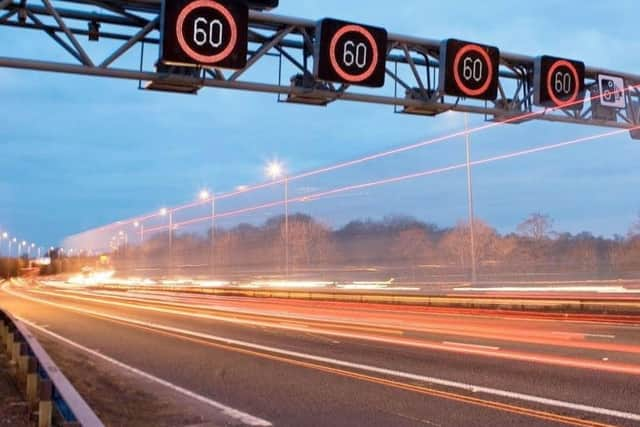Tragic smart motorways deaths on M1 should never have been allowed to happen: Jayne Dowle


Every time I get behind the wheel I feel as if I am taking my life in my hands. And with good reason; so far this year four people have lost their lives between Junction 31 and 35a.
There are two types of smart motorways in the UK. One is where the hard shoulder is opened to traffic when it is busy. The other is where the hard shoulder is open to traffic all the time, known as “all lane running”.
Advertisement
Hide AdAdvertisement
Hide Ad

And despite the use of technology and traffic sensors, only 10 per cent of drivers feel safer on all-lane running (ALR) smart motorways than conventional motorways with a hard shoulder, according to research by the AA motoring organisation. More than 70 per cent of those who responded to the September 2019 AA Populus survey said they feel that ALR smart motorways are more dangerous than normal motorways with a hard shoulder. Tragically, it has taken the death of a Rotherham man, Jason Mercer, 44, who was killed near Sheffield in June, to prompt a Parliamentary review into the smart motorways scheme.
Mr Mercer was involved in a minor crash but when he got out of his car to exchange details he and the other driver, a young man from Mansfield, were hit by a lorry. Both died at the scene.
Advertisement
Hide AdAdvertisement
Hide AdThe cause was taken up by Sarah Champion, Labour MP for Rotherham. At transport questions in the Commons last week she told colleagues that her constituent, Mr Mercer, was dead “because of the Government’s ill-conceived all lane running motorway scheme on the M1”.
The transport minister, George Freeman, agreed to meet Ms Champion and Mr Mercer’s widow, Claire, and announced that the Secretary of State for Transport, Grant Shapps, will be conducting “a very short review” of the scheme.
Obviously, the outcome of this will hang on the results of a General Election, should one be called. But for now, it’s expected that the review could report within a matter of weeks.
It comes after Highways England chief executive Jim O’Sullivan had earlier admitted to the Transport Select Committee that ‘‘dynamic’’ smart motorways with a hard shoulder only used at busy times are “too complicated for people to use” and will be phased out.
Advertisement
Hide AdAdvertisement
Hide AdSo, it’s our fault, is it? Well, as a motorist, I’d say that when you’re travelling at speed in what amounts to a metal bomb, trying to process the confusing signage on overhead gantries, variable speed limits and other restrictions is often more than the average mind can process. Not many of us are born with the observational skills and reaction times of a fighter pilot.
This Highways England volte face might be news to Mr Shapps and his colleagues at the Department for Transport, but it doesn’t surprise me.
I often wonder if the people in charge of roads in this country have ever actually driven on one. Have they ever experienced their car breaking down, juddering to a terrifying halt when all around cars are flying past? According to Highways England’s own figures, 26 people every day break down in a live lane of traffic on a smart motorway.
It happened to me three years ago on the A1 near Grantham in Lincolnshire and I was driving a very small VW Polo at the time. As I travelled in the middle lane, I found the steering pulling to the right and a loss of power every time I tried to correct the wheel.
Advertisement
Hide AdAdvertisement
Hide AdThankfully, my partner was in the passenger seat and he urged me to try and pull over as soon as possible. Nothing in more than a quarter of a century of driving – not even negotiating the freeways in Los Angeles – was as terrifying as negotiating two lanes of live traffic in a limping car.
And this was a standard road where motorway speed limits apply, not one with four or more live lanes of traffic. We literally staggered to a lay-by and gingerly climbed out to wait for the AA by the side of the road. It turned out that the track rod end had gone and we went home in a breakdown truck.
The experience left me shaken and disturbed. For months afterwards I felt panicky in fast-moving traffic. I broke out in a cold sweat coming over Tinsley viaduct on the way back from Nottinghamshire and felt as if I was going to lose control of the car going over the Woodhead Pass to Manchester.
But at least I survived. The four people killed on the smart motorway in South Yorkshire this year alone have not been so fortunate. I can say with experience that there is nothing smart about having no lane to stop in safely on a motorway. This review is welcome, but understanding the mortal danger requires nothing more than common sense.